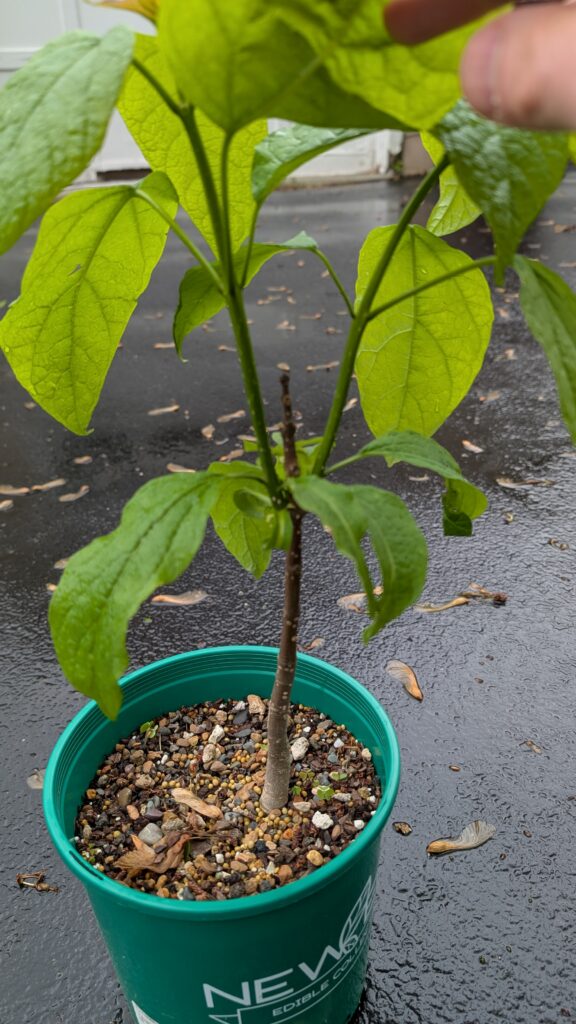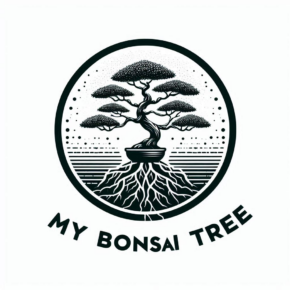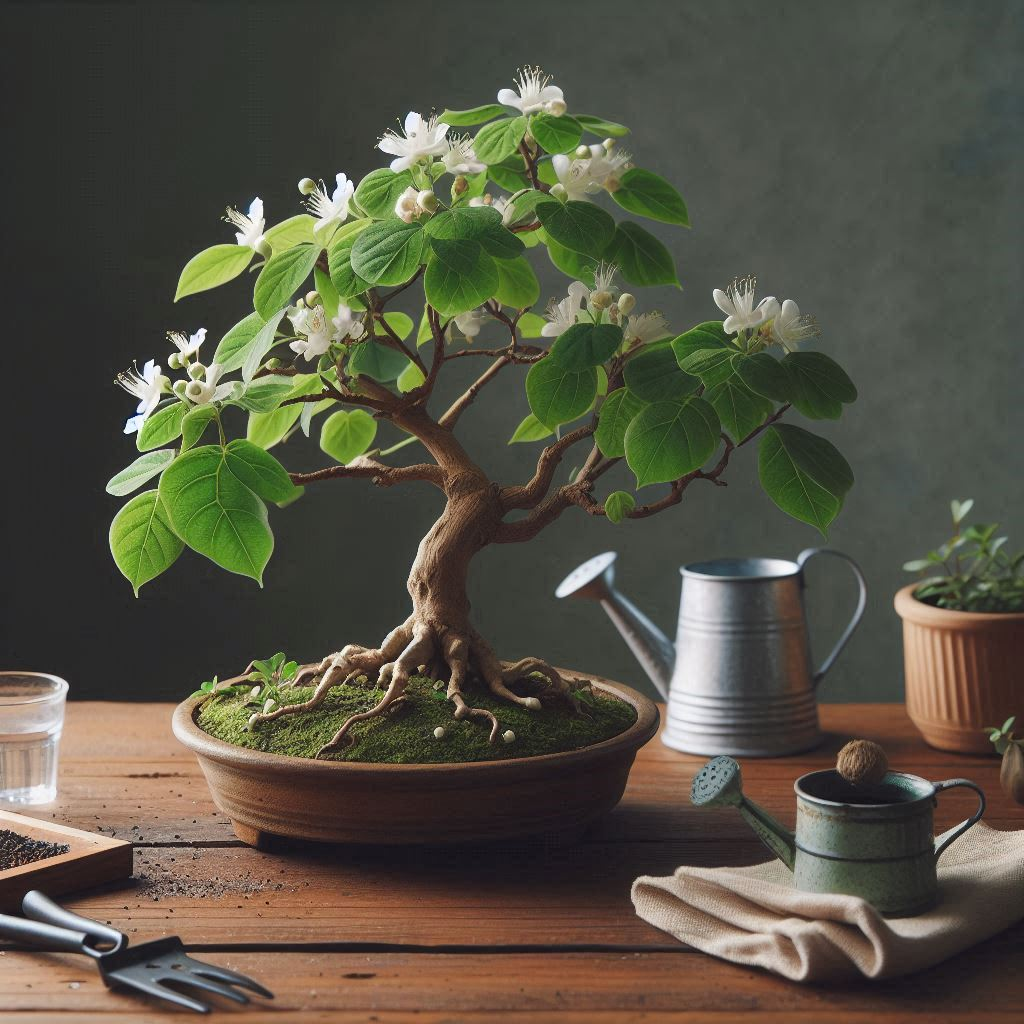- Northern Catalpa Overview
- 2024 Catalpa – Tree #1
Not a lot of people are tripping over themselves to try to create a bonsai out of Catalpa trees. Go ahead and look for some attempts online if you don’t believe me. You might find some thin threads on message boards, half of which the tree in question doesn’t appear to be a Catalpa.
So there’s scant internet advice to stop me (or encourage me, to be fair) from trying this species for bonsai. More seasoned bonsai artists will quickly mention the “gigantic leaves” as sort of a death knell to any internet thread about Catalpas. This sort of feedback was enough to stop me from collecting some Catalpa seeds littering the side of the road just a short walk from my house.
All that changed this summer (2024) when I noticed a seedling growing out of a pile of sooty soil I unearthed in my garden two months before. It was fate!
This post will discuss the characteristics of Northern Catalpas, including their growing preferences, and how suited they are for bonsai. I will track the progress of my seedling in a separate post.
Beneficial Characteristics of Northern Catalpa for Bonsai
Fast Growth Rate– If you’re looking for quicker results in shaping your bonsai, the Northern Catalpa’s fast growth rate can be an advantage. While some bonsai species take years to develop a thick trunk or defined branch structure, the Northern Catalpa’s rapid growth makes it easier to achieve noticeable results in a shorter period.
Beautiful Flowers – In late spring to early summer, the Northern Catalpa produces clusters of white flowers with purple and yellow accents. These blooms add seasonal beauty to the bonsai, making it a focal point in any garden or bonsai collection.
Interesting Seed Pods – The long, bean-like seed pods that dangle from the tree add another layer of visual interest. They can be aesthetically appealing when incorporated into the design of the bonsai. I will admit that I’ve never seen a Catalpa bonsai with seed pods, but I don’t believe they will reduce if left to mature.
Hardy Nature – The Northern Catalpa is a resilient tree, known for tolerating a variety of soils and environmental conditions. It’s relatively resistant to extreme weather, making it easier to care for compared to more delicate bonsai species. This hardiness can be beneficial for those who live in climates with cold winters or unpredictable weather patterns. In the US, Catalpas are rated to a USDA Hardiness Zone 4, which encompasses essentially the entire country.
Pest Resistance – While not immune to pests, the Northern Catalpa is not as susceptible to some common bonsai problems, like spider mites, aphids, or scale insects. This reduces the maintenance burden and gives growers fewer things to worry about.
Challenging Characteristics of Northern Catalpa for Bonsai
Oversized Leaves – One of the biggest challenges of growing a Northern Catalpa as a bonsai is its naturally large leaves. While the leaves can be reduced in size through pruning and careful care, they may remain disproportionately large for a bonsai tree. This could detract from the traditional miniature aesthetic that bonsai enthusiasts often seek. Over time, leaf size will diminish, but it requires consistent effort to manage.
The larger leaf size will cause most bonsai enthusiasts to plan a larger tree design, so plan accordingly if “realism” is one of your goals.
Branch Structure – Northern Catalpas tend to grow straight, sturdy branches, but this can be a disadvantage for bonsai styling. The tree’s natural growth pattern doesn’t lend itself easily to the intricate, graceful branch structures typical in bonsai. Wiring the branches to achieve desired shapes may be more challenging, and the thicker branches can be harder to manipulate compared to other bonsai species.
Posters in online forums who have tried Catalpas mention that mature branches are difficult to wire and bend, so remember to train shoots while they are still young and pliable.
Aggressive Growth – While the fast growth rate can be an advantage, it can also present challenges. The Northern Catalpa’s aggressive growth means you’ll need to prune it regularly to maintain its bonsai shape. Without regular attention, the tree can quickly lose its desired form, with branches growing long and unwieldy. The fast-growing nature also requires frequent repotting to keep the roots in check and prevent the bonsai from becoming root-bound.
Is the Northern Catalpa Right for Your Bonsai Collection?
While the Northern Catalpa may not be the first tree that comes to mind for bonsai, its unique characteristics offer both challenges and rewards. If you’re willing to invest the time and effort into managing its growth and large leaves, you’ll be rewarded with a striking and distinct bonsai that stands out from the more common species.
Whether you choose to embrace the Northern Catalpa’s quirks or stick to more traditional trees, the journey of growing a bonsai is always about patience, creativity, and the joy of nurturing nature in miniature form.
If you’re thinking of adding a Northern Catalpa bonsai to your collection, be sure to follow My Bonsai Tree for more care tips, techniques, and inspiration!
Update [6/6/2025]: My first-year sapling survived the Upstate New York winter in my unheated garage. I stored it in a cheap plastic nursery pot, but I surrounded the pot with insulation I got from one of those subscription food boxes. I was concerned about the sooty soil I decided to let it grow in its first year – it seemed to form into a cement-like brick during the winter. It seemed like it had no ability to breathe, so knowing when to water it was a bit tricky. I leaned on the side of less water.
I thought it was dead as there were no visible (to me) buds in the spring and it was doing nothing while all my other trees were budding out nicely. Around mid-May it began to bud. I probably worried too soon; I should’ve noticed the Catalpa trees around me were late budders, too.
The tree sent two shoots (look like twin trunks) from the spot its two leaves grew from last year. The shoots have swollen the trunk. The lower trunk has a nice, natural s-curve to it, but the shoots are not aligned to create a nice silhouette:

Notice the swelling here:

The swelling is a bit of an annoyance because my plan was to make this a rather large bonsai, given how naturally large the catalpa’s leaves are. I wasn’t planning to do a trunk chop in the future. Anyway, this one’s a long ways off from being a finished product, so we’ll see how it continues to evolve.
Catalpas are quite difficult to bend, so I’m trying to determine if and when I should try to add movement to these shoots. The green shoots look easy to break off so for now, I’m doing nothing. As they begin to lignify, I may check again to see if it’s safe to wire.

